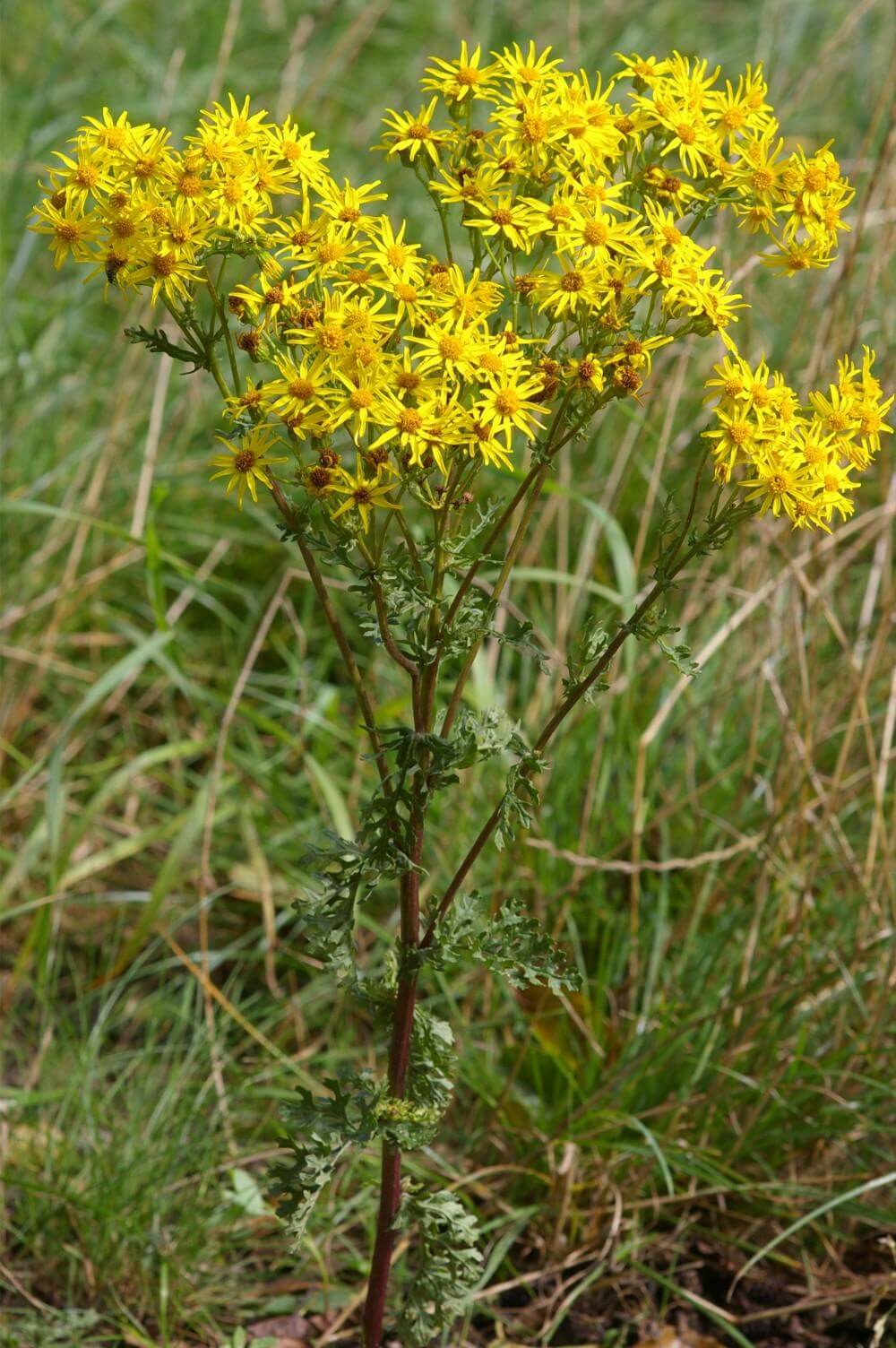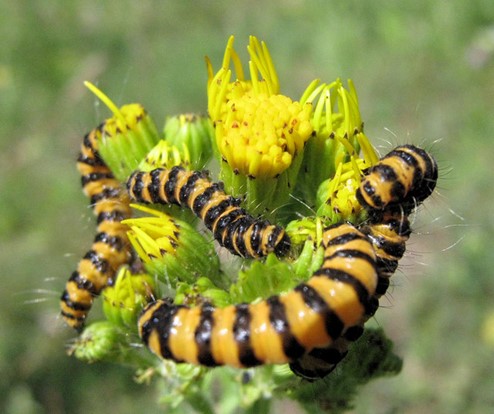Ragwort – What It Is & How To Control It

Ragwort is a common biennial weed. The stems are tough and often tinged red near the base, but brighter green and branched above the middle. A basal rosette of leaves usually dies before flowering but the stem leaves persist. They are deeply dissected, with irregular, jagged-edged lobes. Its first year is its development stage where it forms a small rosette plant and in its second year it develops and puts on vertical growth up to 1m tall and flowers from June right through to November.
All the leaves are dark green and rather tough and may be sparsely hairy on the lower side. They produce a, large, flat-topped head of densely packed yellow flowers with ray florets and disc florets. Each plant can produce up to 150,000 seeds which have a downy appendage which makes them readily dispersible by wind. Once cut or dried ragwort is vert toxic to grazing animals. As ragwort is a toxic plant, suitable precautions must be taken when handling live and dead plants. Hands must be protected by wearing sturdy waterproof gardening type gloves. Arms and legs should also be covered. A facemask should be used to avoid the inhalation of ragwort pollen
Ragwort is one of the 5 weeds that are under The Weeds Act 1959 which empowers DEFRA (Department of Food and Rural Affaires) to serve notice that requires the occupier of the land to take action to prevent the spread of ragwort. This has been amended by the Control of Ragwort Act 2003 that requires the production of a code of practice, the Code of Practice for Ragwort 2004, this states that it is expected that landowners will seek to prevent ragwort from spreading.
The Code of Practice splits ragwort into three risk categories.
High – Ragwort is present within 50 metres of land that is used for grazing or for crops. Immediate action needs to be taken to treat the ragwort.
Medium – Ragwort is present within 50-100 metres of land that is used for grazing or crops. An action plan should be put together.
Low – Ragwort is present over 100 metres of land used for grazing or crops. No action needs to be taken.
Failure to conform to the guidance of the Code of Practice could lead to Natural England imposing a notice of removal or prosecution under The Weeds Act 1959.
Ragwort is a host to vast array of insects and most commonly found feeding on ragwort is the black & yellow striped caterpillars of the Cinnabar moth. These moths can easily strip the plant back to a bear stem. The Cinnabar moth can be used as a biological control but it does have limitations as unless they completely strip the plant, it can come back stronger and adapt a perennial habit.

Traditionally Ragwort is controlled in paddocks and wildflower areas by hand pulling plants. It is very important to remove all pulled plants from paddocks and any area where grazing animals can get to it. Hand pulling is not easy and it can leave sections of the roots in place from which the ragwort can regenerate. Due to the proliferance of seed produced, repeated treatments may be required both spring and autumn for a number of years. The choice of herbicide will be dependant on the stage of growth and history of previous applications. Contact one of our BASIS advisors for qualified professional advice.
Total herbicides that control Ragwort:
Professional use:
Barclay Gallup Biograde Amenity
Roundup ProActive
Amateur use:
Barclay Gallup Home & Garden
Selective herbicides that control Ragwort in turf:
Professional use:
Holster XL
Depitox
Magneto
Thrust
Synero (only to be used 1st March to 31st July)
Amateur use:
Call in a Professional to apply Holster XL or Depitox
By Chris Humphrey MBPR FQA, Technical Manager
For expert help and advice, contact Collier Turf Care on 01328 700600
Related Products
In Stock
£50.11
inc VAT
£41.76
ex VAT
RRP
£49.23
ex. VAT
In Stock
£16.00
inc VAT
£13.33
ex VAT
Out Of Stock
£102.00
inc VAT
£85.00
ex VAT
RRP
£127.27
ex. VAT
In Stock
£66.24
inc VAT
£55.20
ex VAT